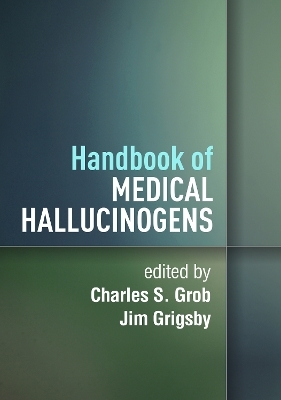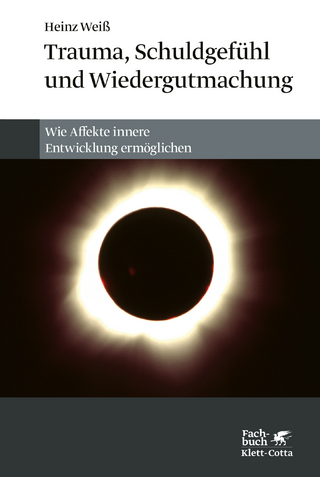
Handbook of Medical Hallucinogens
Guilford Press (Verlag)
978-1-4625-4544-5 (ISBN)
This handbook reviews promising applications of psychedelics in treatment of such challenging psychiatric problems as posttraumatic stress disorder, major depression, substance use disorders, and end-of-life anxiety. Experts from multiple disciplines synthesize current knowledge on psilocybin, MDMA, ketamine, and other medical hallucinogens. The volume comprehensively examines these substances' neurobiological mechanisms, clinical effects, therapeutic potential, risks, and anthropological and historical contexts. Coverage ranges from basic science to practical clinical considerations, including patient screening and selection, dosages and routes of administration, how psychedelic-assisted sessions are structured and conducted, and management of adverse reactions.
Charles S. Grob, MD, is Professor of Psychiatry and Pediatrics at the David Geffen School of Medicine at the University of California, Los Angeles, and Director of the Division of Child and Adolescent Psychiatry at Harbor–UCLA Medical Center. He previously held faculty positions at the Johns Hopkins University and the University of California, Irvine. Dr. Grob has conducted approved clinical research with psychedelics since the early 1990s and has published numerous articles on psychedelics in the medical and psychiatric literatures, as well as several books. He is a founding board member of the Heffter Research Institute. Jim Grigsby, PhD, is Professor in the Department of Psychology, and in the Division of Health Care Policy and Research of the Department of Medicine, at the University of Colorado Denver. His research and over 250 publications have focused on neuropsychology, cognitive neuroscience, telemedicine, and other areas of health services research. His work in neuroscience includes extensive research on executive functioning and on the clinical phenotypes of fragile x-associated tremor/ataxia syndrome (FXTAS), of which he was a co-discoverer. Dr. Grigsby's current research interests include the the therapeutic use and mechanisms of psilocybin and MDMA.
Preface
I. Overview of Hallucinogens
1. The Pharmacology of Psychedelics, David E. Nichols & Charles D. Nichols
2. Plants for the People: The Future of Psychedelic Therapies in the Age of Biomedicine, Dennis J. McKenna
3. Anthropology, Shamanism, and Hallucinogens, Michael Winkelman
4. A Short, Strange Trip: LSD Politics, Publicity, and Mythology--from Discovery to Criminalization, Maria Mangini
5. History of the Use of Hallucinogens in Psychiatric Treatment, Torsten Passie
II. Neuroscience of Hallucinogens
6. Human Neuroimaging Studies of Serotonergic Psychedelics, Enzo Tagliazucchi
7. Memory Reconsolidation in Psycholytic Psychotherapy, Jim Grigsby
III. Individual Hallucinogens
8. LSD, Kristine Panik & David E. Presti
9. Psilocybin, Stephen Ross, Silvia Franco, Collin Reiff, & Gabrielle Agin-Liebes
10. Therapeutic Potential of Fast-Acting Synthetic Tryptamines, Rafael Lancelotta & Alan K. Davis
11. Mescaline, Will Van Derveer
12. MDMA, Michael Mithoefer & Annie Mithoefer
13. Therapeutic and Social Uses of MDMA, Scott Shannon, Rob Colbert, & Shannon Hughes
14. Biological and Psychological Mechanisms Underlying the Therapeutic Use of Ayahuasca, Dráulio Barros de Araújo, Luis Fernando Tófoli, Stevens Rehen, & Sidarta Ribeiro
15. The Ibogaine Project: Urban Ethnomedicine for Opioid Use Disorder, Kenneth Alper
16. Salvia divinorum, Ana Elda Maqueda
17. Ketamine, Gary Bravo, Robert Grant, & Raquel Bennett
IV. Therapeutic Considerations
18. Set, Setting, and Dose, J. C. Callaway
19. The Use of Music in Psychedelic Therapy, Mendel Kaelen
20. The Role of the Guide in Psychedelic-Assisted Treatment, Mary Cosimano
21. Comparative Phenomenology and Neurobiology of Meditative and Psychedelic States of Consciousness: Implications for Psychedelic-Assisted Therapy, Milan Scheidegger
22. Adverse Effects, Kelan Thomas & Benjamin Malcolm
V. Indications and Purpose
23. Utility of Psychedelics in the Treatment of Psychospiritual and Existential Distress in Palliative Care: A Promising Therapeutic Paradigm, Anthony P. Bossis
24. Classic Psychedelics for Treatment of Alcohol Use Disorder, Michael P. Bogenschutz & Sarah E. Mennenga
25. Psychedelics in the Treatment of Addiction, Matthew W. Johnson
26. The Treatment of Depressive Disorders with Psychedelics, Dave King & Jonny Martell
27. Hallucinogens in Headache, Emmanuelle A. D. Schindler
VI. Mystical/Religious Experiences and Philosophical Considerations
28. Mystical/Religious Experiences with Psychedelics, William A. Richards
29. Philosophical Considerations Concerning the Use of Hallucinogens in Psychiatric Treatment, Candice L. Shelby
| Erscheinungsdatum | 08.04.2021 |
|---|---|
| Verlagsort | New York |
| Sprache | englisch |
| Maße | 178 x 254 mm |
| Gewicht | 1232 g |
| Themenwelt | Geisteswissenschaften ► Psychologie ► Allgemeine Psychologie |
| Geisteswissenschaften ► Psychologie ► Sozialpsychologie | |
| Medizin / Pharmazie ► Medizinische Fachgebiete ► Psychiatrie / Psychotherapie | |
| Medizin / Pharmazie ► Studium | |
| ISBN-10 | 1-4625-4544-0 / 1462545440 |
| ISBN-13 | 978-1-4625-4544-5 / 9781462545445 |
| Zustand | Neuware |
| Haben Sie eine Frage zum Produkt? |
aus dem Bereich


